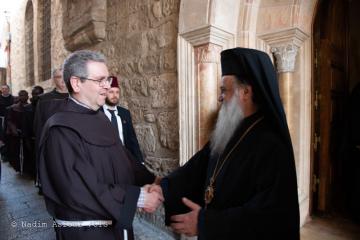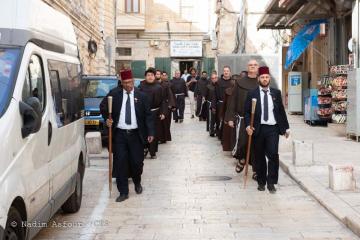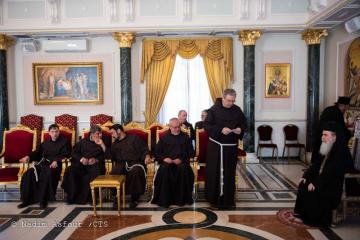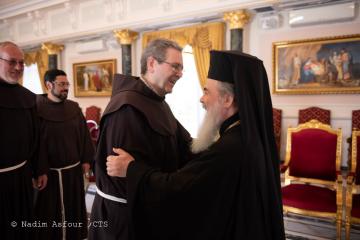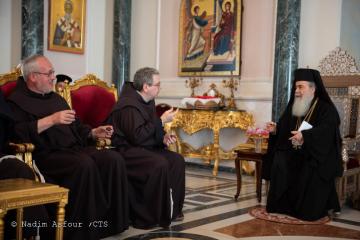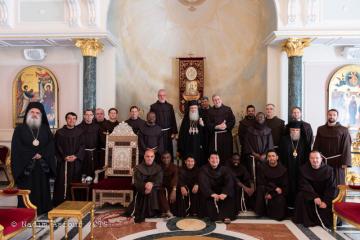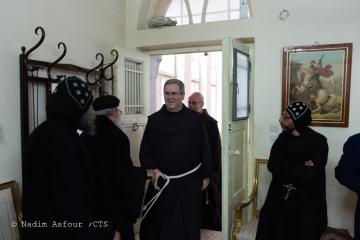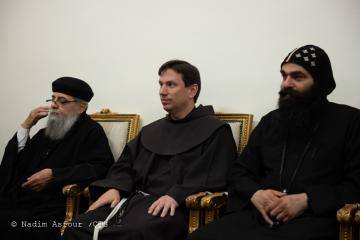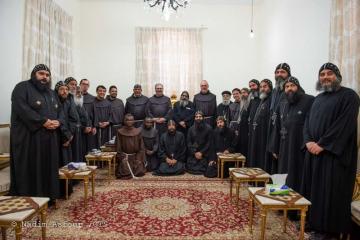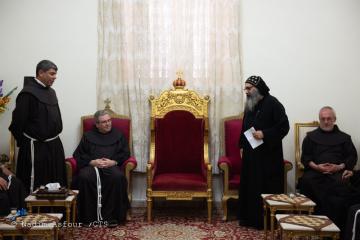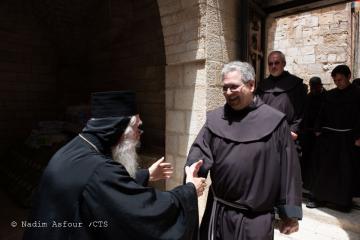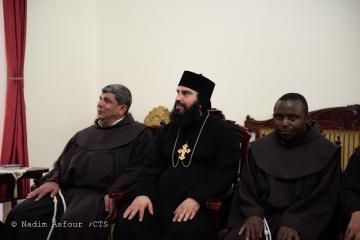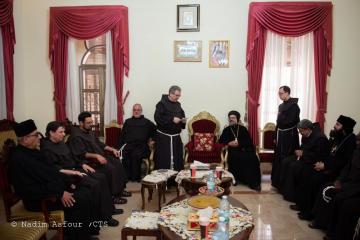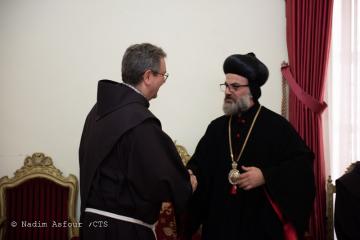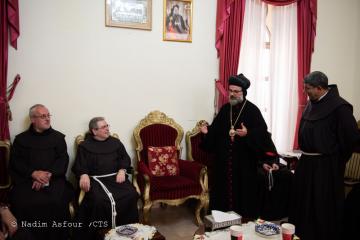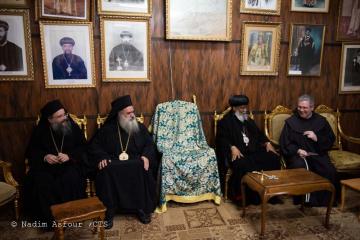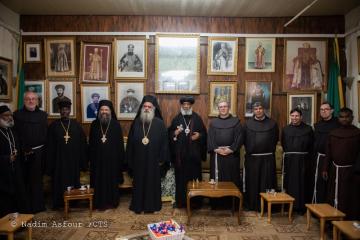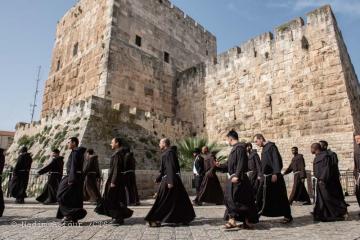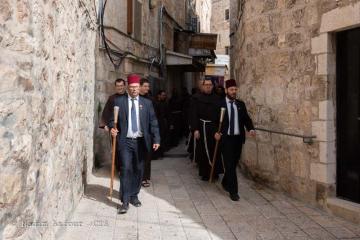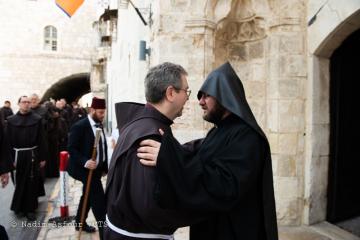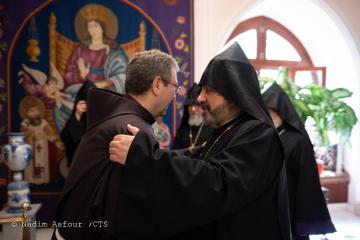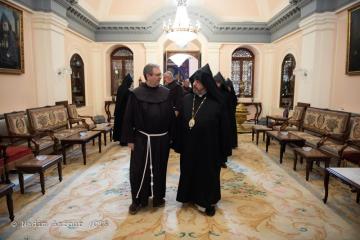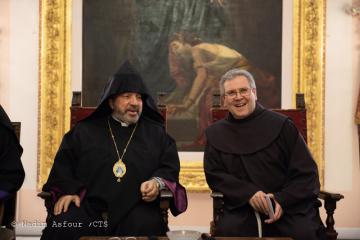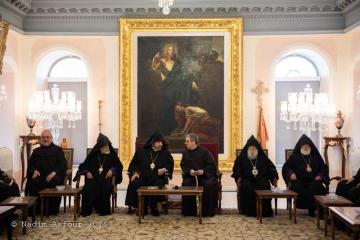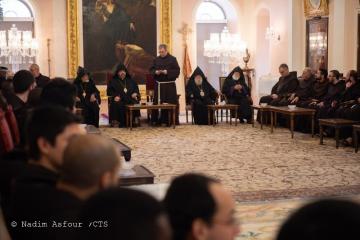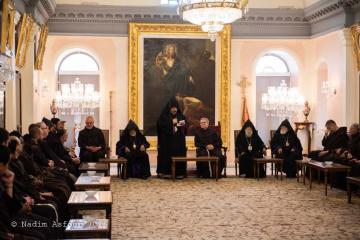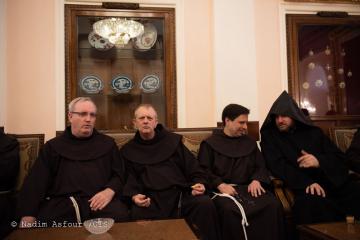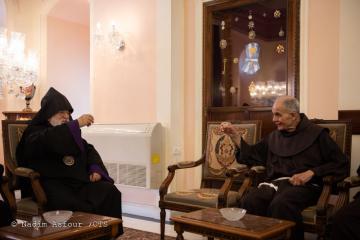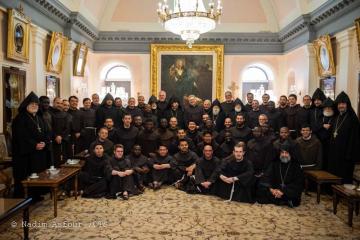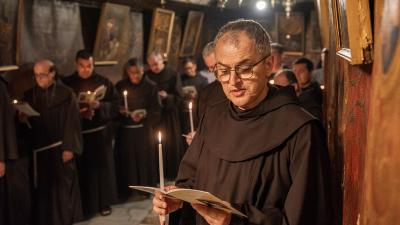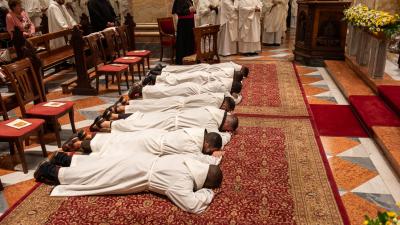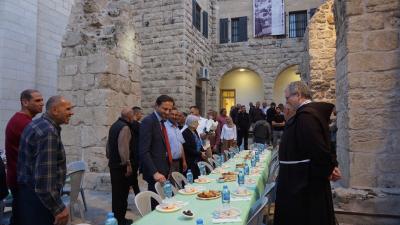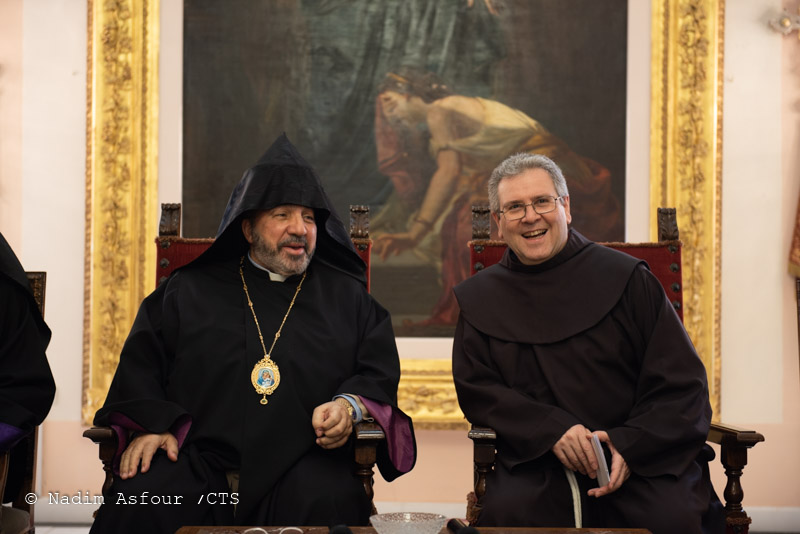
Once the celebrations of Orthodox Easter were complete, the community of the Franciscan Friars Minor of St. Savior led by the Custos Br. Francesco Patton sent their good wishes, as per Holy Land tradition.
The first to welcome the Franciscan delegation were the Greek Orthodox. The Custos stressed the importance of cooperation between the various Christian denominations present in this Land, in Jerusalem in particular. Theophilus III, the primate of the Orthodox Church of Jerusalem, focused his speech on the Easter celebration that just passed.“Easter is the most inclusive feasts of Christianity,” he said. "In the light of the resurrection, we can rebuild our unity together beginning from this event.”
The delegation of Franciscan friars then moved to the Coptic Orthodox Patriarchate, where they met a representative of Mons. Anba Antonio. Fr. Patton reminded the Coptic brothers that this feast for us is the source of our witness and of our hope [and that] “we know that a new world and a new humanity is possible if we accept and receive the Easter gift of the Spirit. Thus, we pray to the risen Jesus to blow the gift of the Spirit on the Middle East and on the world so as to offer peace and reconciliation.” The Custos also mentioned the celebrations in Egypt of the 800th anniversary since the meeting between St. Francis and the Sultan, most particularly in light of the meeting with Pope Tawadros II, which took place before the official beginning of the celebrations. The speech by Anba Antonio’s representative focused on the evangelical joy of the Resurrection, emphasizing how the principles of peace and joy, hope and serenity are all contained within the Gospel, especially in the pages that retell this joyful event.
The new Patriarchal Vicar of the Syriac Orthodox Church of Jerusalem, Archbishop Gabriel Dahho, who took office on April 12, welcomed the delegation to the Syriac Patriarchate. In this third meeting, the Custos recalled that, as Pope Francis says, Easter is the feast of tombstones removed and rocks rolled over. Those stones that are against our hope, such as death, sin, loneliness, and fear. In conclusion, the Custos emphasized the closeness and friendship to the community, especially during this time that represents the beginning of the new Archbishop’s ministry. Mons. Dahho then expressed his intentions to create community among the various confessions, thanks to his intense experience in Brazil. “Jerusalem is not an easy place but we work alongside Jesus, who walked in suffering in this land so as to then reach eternal life.”
The fourth community to have welcomed the visit was the Ethiopian one, to which the Custos expressed his good wishes in memory of the descent of the Holy Spirit when Jesus came upon the disciples so as to remain with them forever. In memory of the event of the Resurrection, the community said it was very happy to receive these good wishes every year, a sign of cooperation and unity among the various Christian denominations, especially in these days when everyone remembers the resurrection of Jesus Christ, the quintessential son of God.
The last community to have been visited was the Armenian one. Fr. Patton wished them a Holy Easter by recalling the meaning of Easter as liberation from slavery. “Easter for us is the beginning of the new world, free from slavery. Christ is alive with us and shows us the light.” The Armenian Patriarch NourhanManougian welcomed the wishes of the Franciscan delegation, bringing to mind the work done together for the holy places during these years of cooperation and identifying within that a responsibility of the current generations toward the future ones. “We can celebrate many other Easters together, in the very places where these events from Jesus’ life took place,” he concluded.
Giovanni Malaspina


